Introduction: (Technical analysis chart patterns pdf 2024)
Stock chart patterns often signal transitions between rising and falling trends. A price pattern is a recognizable configuration of price movement identified using a series of trendlines and/or curves. When a price pattern signals a change in trend direction, it is known as a reversal pattern; a continuation pattern occurs when the trend continues in its existing direction following a brief pause. There are many patterns used by traders—here is how patterns are made and some of the most popular ones. (Technical analysis chart patterns pdf 2024)
KEY TAKEAWAYS:
- Technical analysis is based on patterns, which are the observable structures made by the fluctuations of asset prices on a chart.
- A line joining similar price points, like closing prices, highs, or lows, throughout a given time frame indicates the presence of a pattern.
- Chartists and technical analysts look for patterns to predict how a security’s price will move in the future.
- These patterns range in complexity from multiple head-and-shoulders formations to trendlines.
Technical Analysis Trendlines:
Understanding and being able to draw trendlines is useful since pricing patterns are recognized by a set of lines or curves. Technical analysts can identify regions of support and resistance on a price chart by using trendlines. On a chart, trendlines are made by joining an order of falling peaks (highs) or rising troughs (lows).
A rising trendline, also known as an angular trendline, is seen in markets when prices are rising to higher highs and falling to higher lows. The rising lows are connected to create the upward trendline. On the other hand, a downward-angled trendline, also known as a down trendline, appears when prices are hitting lower highs and lower lows. (Technical analysis chart patterns pdf 2024)
Different people have different opinions about which part of the price bar should be used, but in general, the body of the candle bar, not the thin wicks above and below it, represents where most of the price action has occurred. For this reason, drawing the trendline on the candle body may be more accurate, particularly for intraday charts where there may be “outliers” (data points that fall significantly outside the “average” range).
Rather than using highs or lows to build trendlines, chartists frequently utilize closing prices on daily charts since they reflect the traders and investors who are willing to hold a position throughout the course of a day, weekend, or market holiday. In general, trendlines with three or more points are more reliable than those with just two. (Technical analysis chart patterns pdf 2024)
- When prices are reaching greater highs and lower lows, an uptrend is ongoing. Two of the lows are connected by upward trendlines, which also indicate support levels below the price.
- When prices are reaching lower highs and lower lows, a downtrend is starting. At least two of the highs are connected by downward trendlines, which show resistance levels above the price.
- A sideways market, or consolidation, is characterized by price movement between two parallel, frequently horizontal trendlines.
Stock Chart Pattern Types
Continuation Patterns:
A continuation pattern is a price pattern that indicates a moment to breathe in an ongoing trend. One could think of a continuation pattern as a break in a dominant trend. This is the moment during an uptrend when the bulls restore the ability to breathe, or during a decline when the bears temporarily ease up.
It is impossible to predict if a trend will continue or turn around when a pricing pattern is developing. Therefore, it is crucial to pay close attention to the trendlines that were used to create the price pattern as well as if the price breaks above or below the zone of continuation. Unless a trend is clearly reversing, technical analysts usually advise thinking it will continue. (Technical analysis chart patterns pdf 2024)
A price pattern that stays on its trend is referred to be a continuation pattern. Typical patterns of continuation are as follows:
- Pennants made with two trendlines that combine
- Drawn with two parallel trendlines, the flags
- Wedges made with two trendlines that, if they were long enough, would converge and are both inclined either up or down
- When compared to other chart patterns, triangles are one of the most often used patterns in technical analysis. Symmetrical triangles, ascending triangles, and descending triangles are the three most prevalent forms of triangles. These patterns in the charts may continue for a few weeks or for several months. (Technical analysis chart patterns pdf 2024)
Reversal Patterns
A reversal pattern is a pricing pattern that indicates a shift from the current trend. These patterns indicate times when the bears or bulls have reached its peak. New energy from the other side will cause the established trend to pause and then shift.
Distribution patterns are reversals that happen at market peaks, when commodities for trading are more quickly sold than earned. Reversals that take place during market bottoms, on the other hand, are referred to as accumulation patterns since they cause the trading instrument to become more actively bought than sold.
A reversal pattern in price occurs when there is a pause followed by a price reverse. Typical reversal patterns include, for example:
- Head and Shoulders, which indicates two minor price swings surrounding a major move
- Double Tops are a short-term swing high and an unsuccessful attempt to break above the same resistance level that followed.
- Double Bottoms, indicating a transient swing low and a subsequent, unsuccessful effort to breach below the same level of support
Pennants
Pennants are two trendlines formed in continuation patterns that finally converge. One important thing to note about pennants is that their trendlines move in two different directions: one trendline will move downward, and the other will move upward. A pennant is shown in the screenshot below. Typically, when the pennant is forming, the volume will drop; when the price eventually breaks out, the volume will rise.
The flagpole on the left of a bullish pennant is a pattern that indicates an upward moving price.
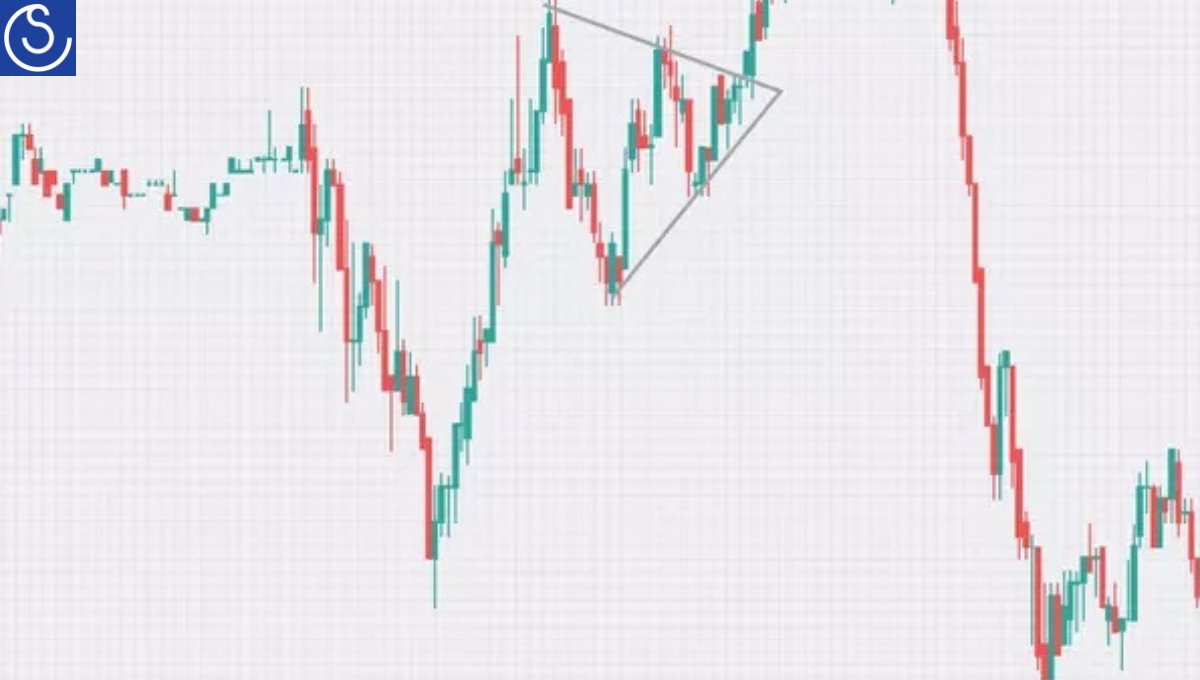
One pattern that denotes a downward trend in prices is the bearish pennant. Volume is decreasing in a bearish pattern, and a flagpole appears on the pennant’s right side.
Flags
Flags are continuation patterns that can be horizontally (falling up, down, or sideways) shaped utilizing two parallel trendlines. Generally speaking, a bullish flag with an upward slope indicates a pause in a market that is going downward; a bearish flag, on the other hand, indicates a break during an up-trending market. Declining volume usually precedes the creation of the flag and then rises when price breaks out of the formation. (Technical analysis chart patterns pdf 2024)
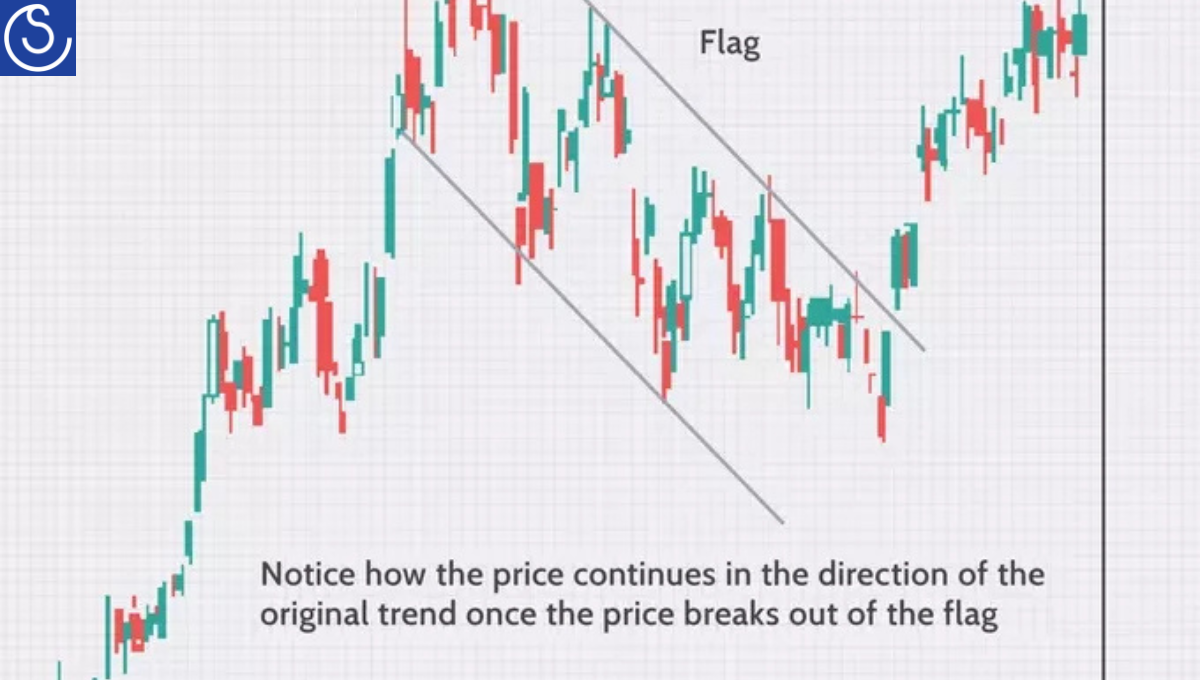
Wedges
Wedges are continuation patterns that are created using two converging trendlines, much like pennants. The difference between a wedge and a pennant is that a wedge’s trendlines go in the same direction, either up or down.
A wedge with an angle of down indicates a break in an upward trend, while an angle of up indicates a brief stoppage in a down market. Volume usually drops off during pattern formation, similar to pennants and flags, and then picks up again after price breaks above or below the wedge pattern.
Wedges have an angled pattern because they exclusively show upward and downward price fluctuations, in contrast to triangles and pennants. (Technical analysis chart patterns pdf 2024)
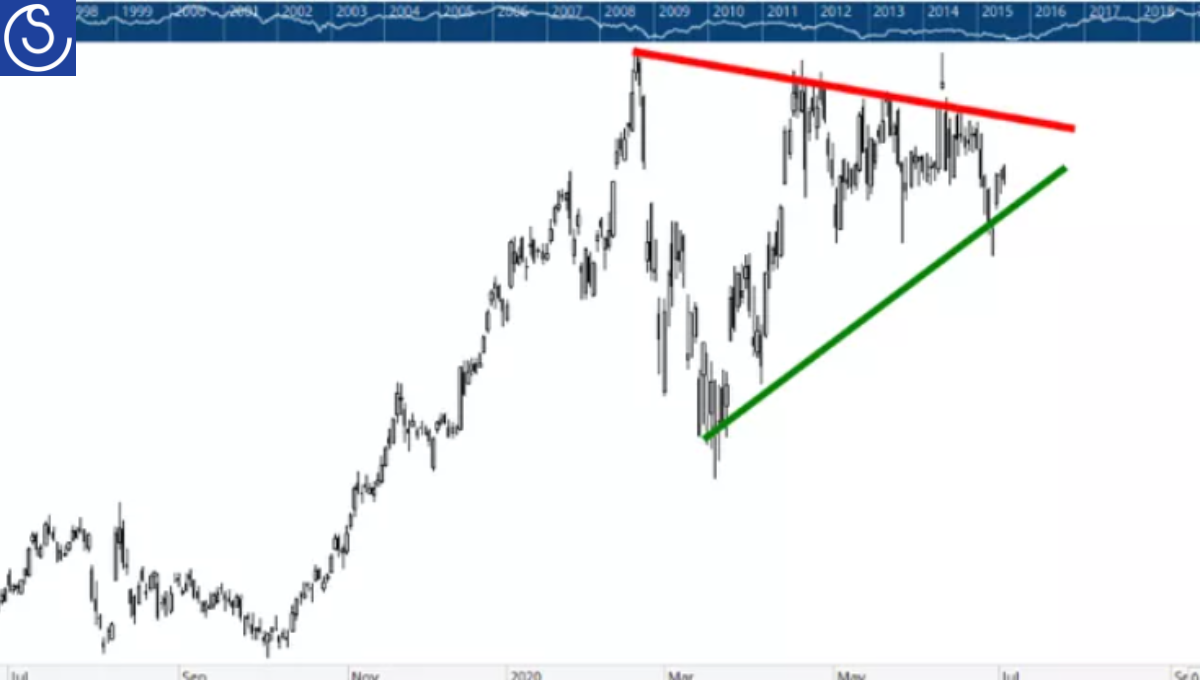
Ascending Triangles
A continuation pattern with an entry point, profit objective, and stop loss level is an ascending triangle. The entry point is indicated by the meeting point of the resistance line and the breakout line. One bullish trading pattern is the rising triangle.
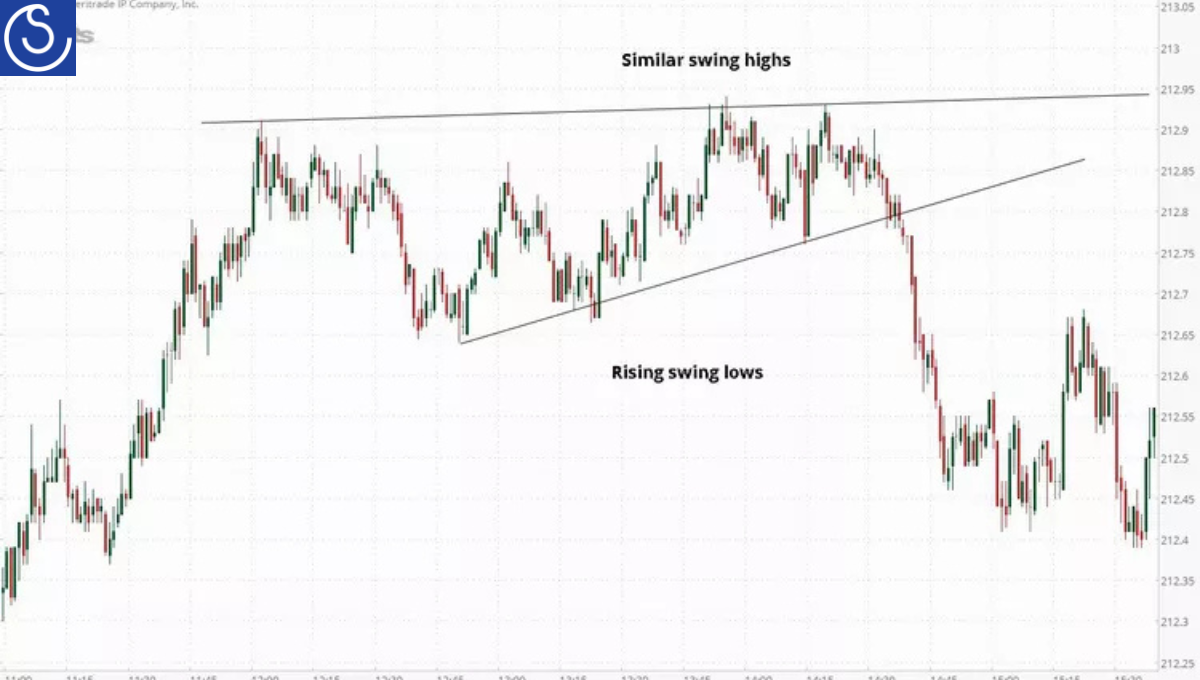
Descending Triangles
A descending upper trend line indicates a collapse is probably coming soon, and the descending triangle, which is the opposite of the ascending triangle and shows that demand is declining.
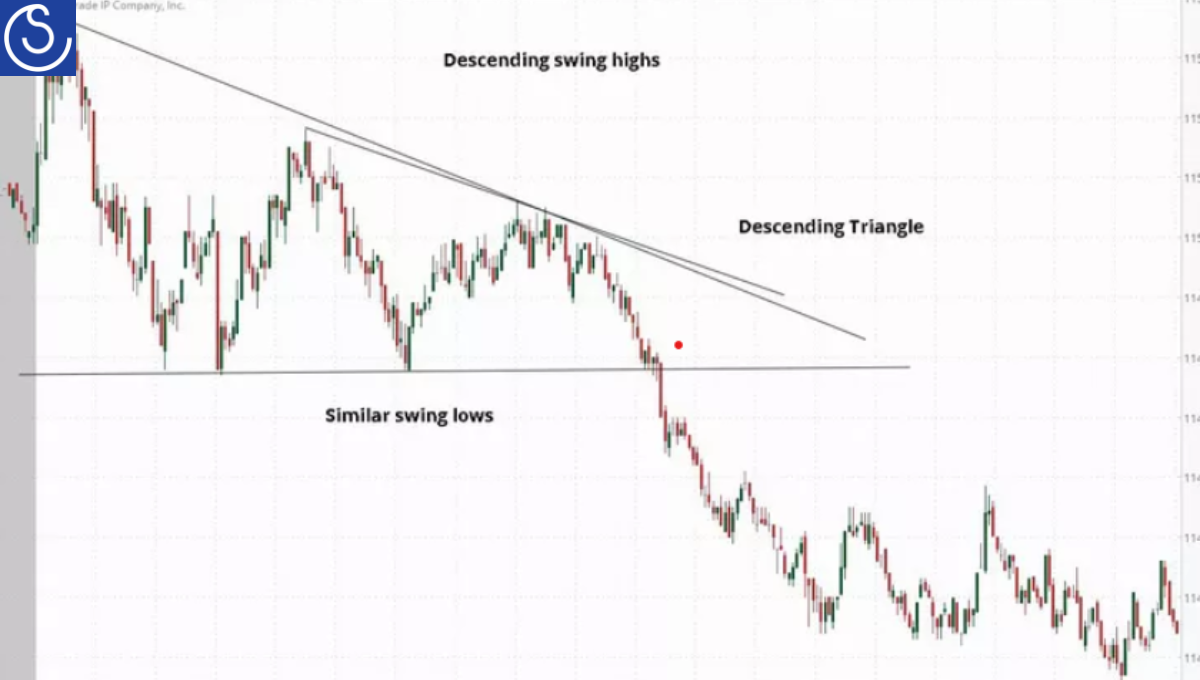
Symmetrical Triangles
The formation of symmetrical triangles, which indicate simply the likelihood of a breakout rather than an upward or downward trend, is caused by two trend lines converging into one another. As seen in the figure below, the height of the left vertical side of the triangle corresponds to the magnitude of the breakouts or breakdowns.
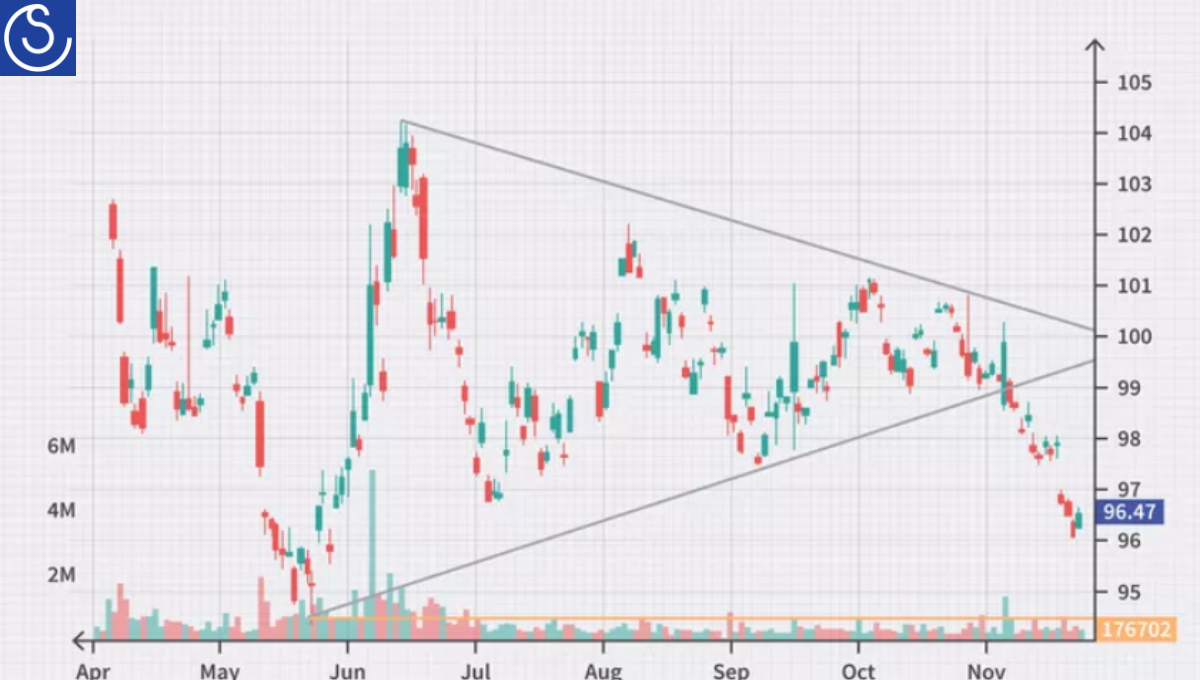
Head and Shoulders
The head and shoulders pattern is a reversal pattern that can show up as an order of three pushes at market peaks or troughs: a first peak or trough, a second, bigger push, and a third push that replicates the first.
A head and shoulders top pattern can cause an uptrend to stop and then turn into a downturn. On the other hand, a downtrend that forms a head and shoulders bottom is probably going to see an upside trend reversal.
As seen in the picture below, trendlines that are horizontal or slightly slanted can be used to connect the peaks and troughs between the head and shoulders. Volume may drop while the pattern forms and then increase again if the price breaks above
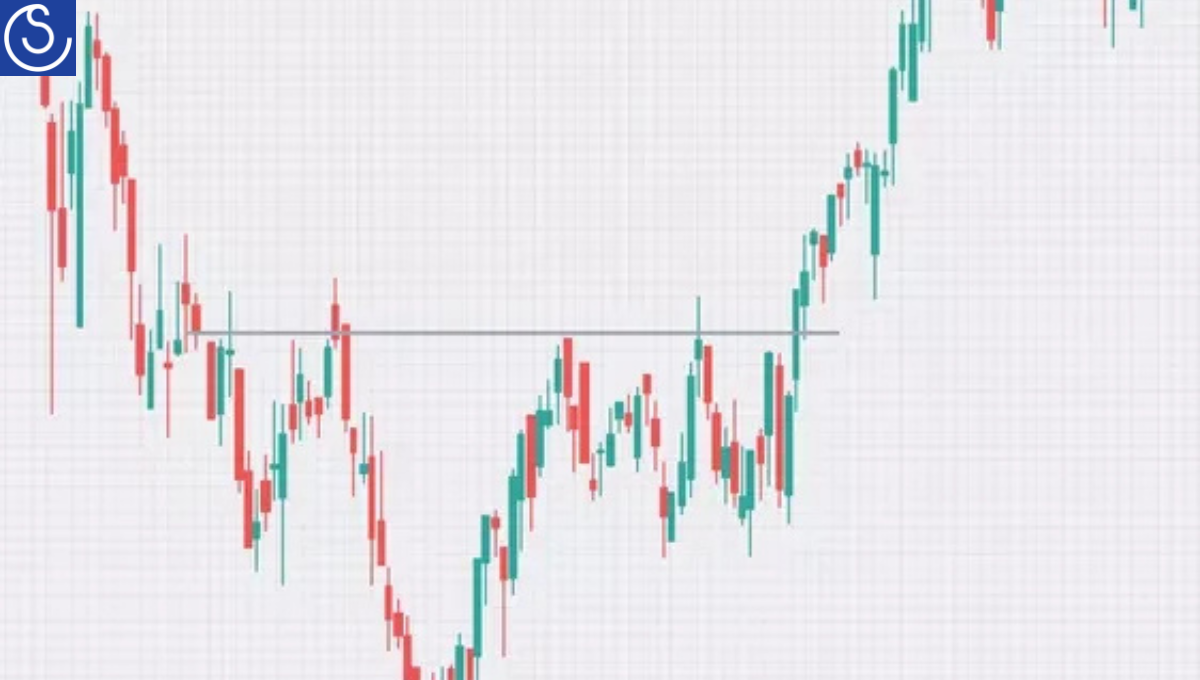
How Many Different Kinds of Chart Patterns Exist?
The number of patterns utilized by traders varies from person to person and might reach above 75. While some traders can utilize many more patterns than others, others may simply use a limited amount.
Which Chart Pattern is the Strongest?
Trader preference and methodology determine which chart pattern is the strongest. Your strongest one will be the one you find to be most effective for your trading plan.
What Are the Different Graph Patterns?
Patterns can be divided into three categories: bilateral, reversal, and continuation. Certain traders include only symmetrical triangles in the bilateral group, while others combine ascending, descending, and symmetrical triangles into a different group known as bilateral patterns.

This blog is a great mix of informative and entertaining content It keeps me engaged and interested from start to finish